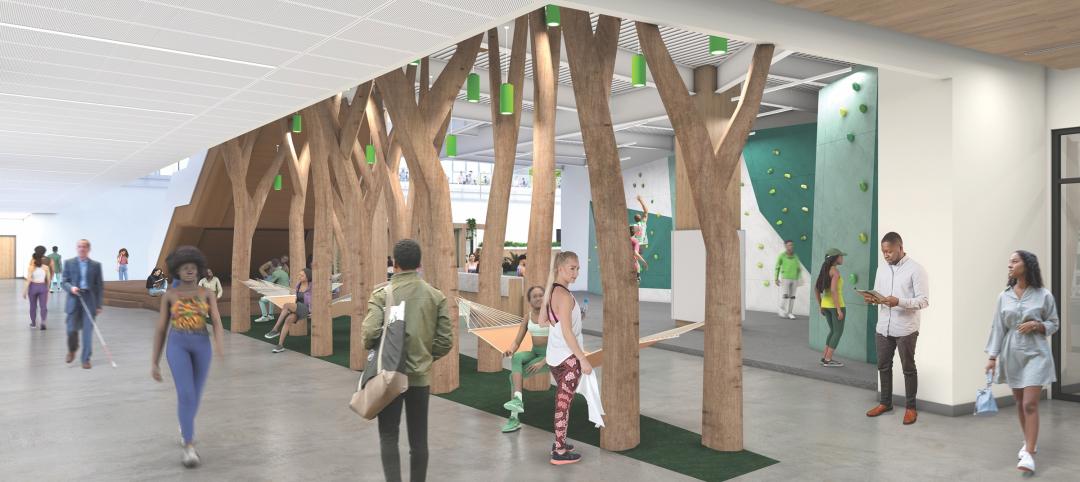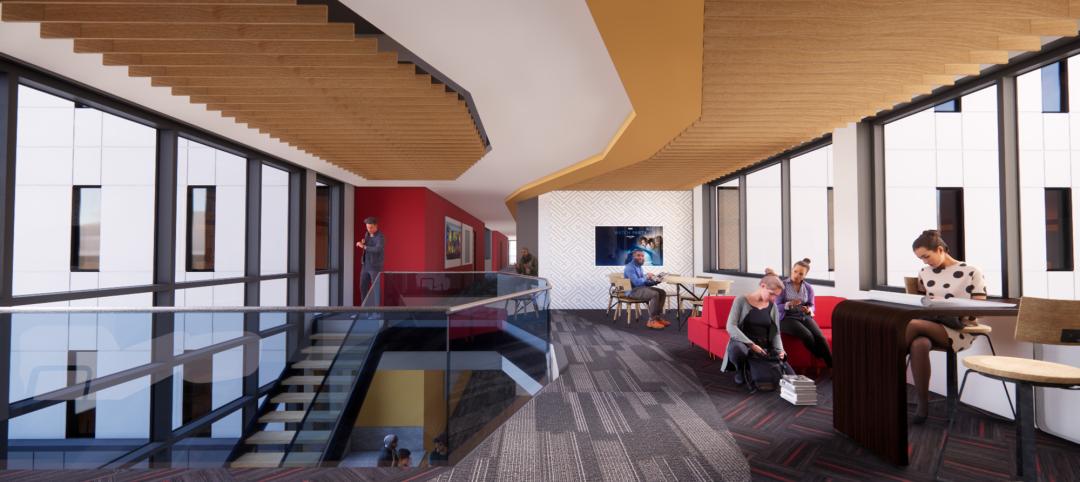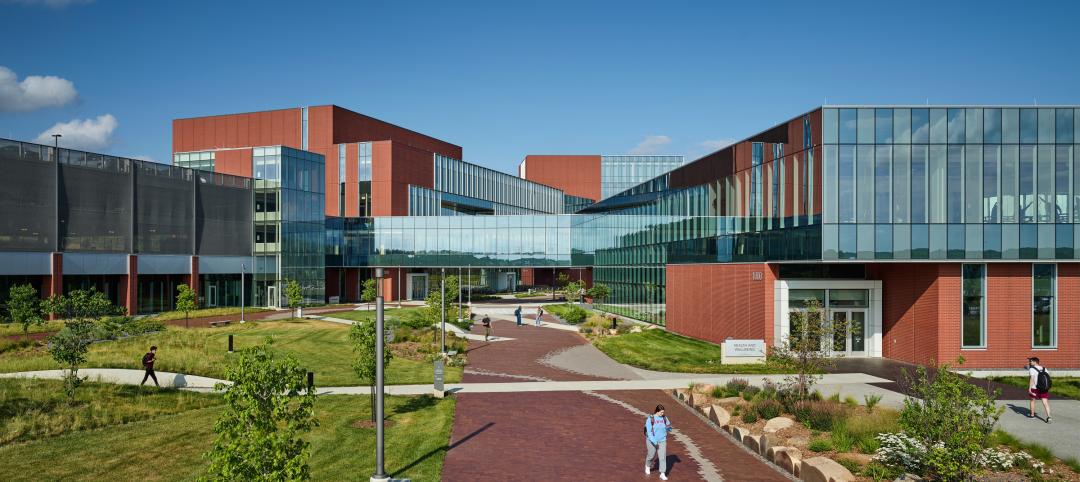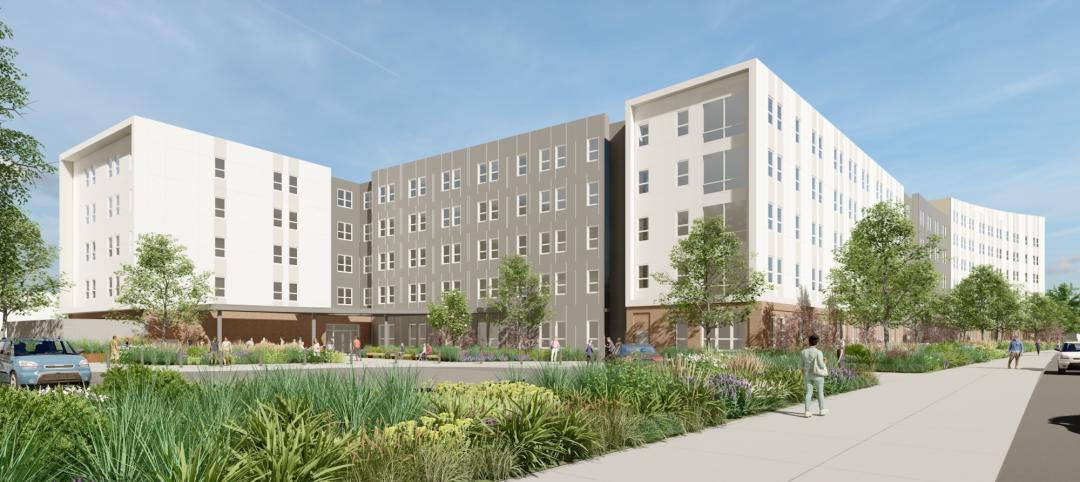Data centers are among the most complex building types, requiring a significant amount of coordination among Building Team members, often with a compressed schedule and in tight spaces. Perhaps no other project type stands to benefit more from coordination using building information modeling and virtual design and construction than data centers.
“Everyone speaks to the benefits of BIM for coordination and clash detection on projects, but when you talk about all of the lines of conduit and other elements that you’re running through what are ultimately very tight spaces, it’s a steroidal environment when you’re talking about a data center,” says Bryant Farland, Senior Vice President and Leader of Skanska’s Mission Critical Center of Excellence. “Coordination becomes just that much more important, therefore, BIM becomes that much more useful.”
Building Design+Construction reached out to several AEC professionals who specialize in data centers to identify the areas of planning, design, and construction where they’re getting the most value out of BIM/VDC coordination. They pinpointed the following:
1. Planning the space
Data centers have huge mechanical and electrical capacities for their footprint—as many as 30 times the typical office building. Furthermore, the equipment is typically concentrated outside the server halls to reduce risk to the IT equipment. Together, these factors create incredibly dense equipment spaces and major duct, pipe, and conduit distribution paths, says Tom Boysen, Senior Project Manager with Sellen Construction (www.sellen.com).
“BIM helps data center designers confirm that the equipment and distribution can all fit, verify maintenance and service clearances, and analyze pressure drop and voltage drop with the actual routing,” says Boysen, who leads Sellen’s data center work. “Underground electrical feeders can be so dense that they could overheat and melt down if not designed properly. BIM’s precise routing allows electrical designers to model the heat dissipation and adjust the electrical duct bank configuration accordingly.”
2. Coordinating prefabrication
Data center clients, whether wholesale operators, tech firms, or financial institutions, are pushing the pace of new construction and retrofit projects. Fast track is passé. Uber fast track is the new standard as clients look to get their facilities online sooner.
To help speed construction, AEC firms are prefabricating many of the building systems and components, from the enclosure to the mechanical and electrical systems. BIM/VDC is vital for designing and testing prefabrication concepts with respect to material handling, path of travel, and installation sequence.
“We’re constantly pushing the amount and types of items we fabricate at our facilities,” says Jason Rahn, Group Vice President with The Hill Group (www.hillgrp.com). “This allows us to minimize the amount of fit-up and welding in a field environment, and it allows us to maintain excellent quality assurance due to the majority of our work being built in a controlled, shop atmosphere.”
Rahn points to a recently completed data center that required 450 welds for the piping systems, of which only 20 needed to be performed in the field. “The reduction in field welding required us to have only one welding machine on site,” he says. “It also decreased the field installation time from about 20 working days to just five.”
One prefabrication tip from Rahn: Make sure to include hangers in the BIM model. “It allows us to fabricate all piping supports and hangers en masse, deliver to the site early, and have installation completed prior to piping and ductwork material deliveries.”
3. Managing project phasing
Data center projects are typically phased to avoid building out expensive capacity that is not needed on day one. Often, the initial capacity target shifts during design and construction due to leasing activity and the difficulty of projecting the need for computer power, says Boysen.
“By adding a phasing element to the BIM model, the team can analyze the cost, schedule, and energy consumption at different phase steps,” says Boysen. “BIM supports phasing by quickly allowing the team to modify the design documents, adding or subtracting modules of power and cooling. Then, after the day-one construction is complete, BIM supports future development with an accurate record of the installed condition, allowing the team to plan future deployments with confidence.”
4. Integrating raised-floor layouts
Raised access floors can be especially tricky, says Rahn, because most floor installers do not model their installations—adjustments for structural bridging and support are typically made in the field. Creating a BIM model of the flooring allows the installer to understand where the MEP systems are located in relationship to the pedestal support systems.
“By coordinating and integrating this into the modeling process, flooring installers can see where they need to modify their support framing early in the process and fabricate the necessary bridging and support components to span across the MEP systems where necessary,” says Rahn. “This eliminates the time and effort it would take to do this in the field once the MEP systems are installed, thus decreasing the field installation time.”
5. Keeping the routing free of conflicts
Transmitting the capacity out of the densely packed equipment requires multiple layers of stacked conduit, duct, and piping. Using the model, the detailers can pick up where the designers left off, adding intelligence to the individual elements. “Tight project schedules don’t allow for field routing to solve conflicts, so the routing must be solved during the detailing stage to allow for 99.99% conflict-free installation,” says Boysen.
6. Enabling commissioning and O&M tasks
Data centers require a robust commissioning process to ensure performance and reliability. Commissioning information tags for each piece of equipment and feeder can be added to the BIM model to keep a live database of commissioning process status.
“As with any new facility construction, the information that is so valuable to the operational staff—namely submittals, O&M manuals, as-built plans, balancing reports, and commissioning reports—is sometimes never transmitted to them, and then often lost over the years as the personnel turn over,” says Boysen.
When this information is inserted into the BIM database, the information can be retained and viewed for each piece of equipment, rather than in separate volumes. “Whether they are facing a problem or trying to improve energy efficiency, data center operators would benefit from a comprehensive set of information,” he says.
7. Analyzing air flow
By incorporating computational fluid dynamic (CFD) simulations into the BIM model, engineers can evaluate and fine tune server layouts based on the thermal modeling. “By incorporating that process into the Revit model, we’re able to visualize how the air will flow inside the data center and see the temperature variation based on the height and how the air is moving,” says Luis Cetrangolo, AIA, Associate at Integrated Design Group (www.idgroupae.com). “It’s especially helpful in being able to see how the servers in a computer room receive cold air and how hot air is removed.”
Cetrangolo says the CFD modeling is used more as a verification of engineering calculations than as a design tool. “It’s really a fine-tuning process.”
We want your ideas! This topic will be an ongoing series on BDCnetwork.com. If you have ideas for how BIM/VDC coordination benefits data center projects, please send them to dbarista@sgcmail.com.
Related Stories
Construction Costs | Oct 16, 2024
Construction Crane Index: Most major markets’ crane counts increase or hold steady in third quarter
Rider Levett Bucknall’s (RLB’s) latest Crane Index and Quarterly Cost Report shows continued decreasing cost inflation and crane counts increasing or holding steady in 10 of the 14 major markets it surveyed. The national average increase in construction costs was 1.07%, the lowest it’s been in the last three years.
AEC Tech | Oct 16, 2024
How AI can augment the design visualization process
Blog author Tim Beecken, AIA, uses the design of an airport as a case-study for AI’s potential in design visualizations.
University Buildings | Oct 15, 2024
Recreation and wellness are bedfellows in new campus student centers
Student demands for amenities and services that address their emotional and mental wellbeing are impacting new development on college campuses that has led to recreation centers with wellness portfolios.
Higher Education | Oct 14, 2024
Higher education design for the first-gen college student
In this Design Collaborative blog, Yogen Solanki, Assoc. AIA, shares how architecture and design can help higher education institutions address some of the challenges faced by first-generation students.
Performing Arts Centers | Oct 10, 2024
Studio Gang's performing arts center for Hudson Valley Shakespeare breaks ground
A new permanent home for Hudson Valley Shakespeare, a professional non-profit theater company, recently broke ground in Garrison, N.Y. The Samuel H. Scripps Theater Center includes a 14,850 sf performance venue that will serve as a permanent home for the theater company known for its sweeping open-air productions of classics and new works.
Sustainable Design and Construction | Oct 10, 2024
Northglenn, a Denver suburb, opens a net zero, all-electric city hall with a mass timber structure
Northglenn, Colo., a Denver suburb, has opened the new Northglenn City Hall—a net zero, fully electric building with a mass timber structure. The 32,600-sf, $33.7 million building houses 60 city staffers. Designed by Anderson Mason Dale Architects, Northglenn City Hall is set to become the first municipal building in Colorado, and one of the first in the country, to achieve the Core certification: a green building rating system overseen by the International Living Future Institute.
3D Printing | Oct 9, 2024
3D-printed construction milestones take shape in Tennessee and Texas
Two notable 3D-printed projects mark milestones in the new construction technique of “printing” structures with specialized concrete. In Athens, Tennessee, Walmart hired Alquist 3D to build a 20-foot-high store expansion, one of the largest freestanding 3D-printed commercial concrete structures in the U.S. In Marfa, Texas, the world’s first 3D-printed hotel is under construction at an existing hotel and campground site.
University Buildings | Oct 9, 2024
Des Moines University Medicine and Health Sciences opens a new 88-acre campus
Des Moines University Medicine and Health Sciences has opened a new campus spanning 88 acres, over three times larger than its previous location. Designed by RDG Planning & Design and built by Turner Construction, the $260 million campus features technology-rich, flexible educational spaces that promote innovative teaching methods, expand research activity, and enhance clinical services. The campus includes four buildings connected with elevated pathways and totaling 382,000 sf.
Student Housing | Oct 9, 2024
University of Maryland begins work on $148 million graduate student housing development
The University of Maryland, in partnership with Campus Apartments and Mosaic Development Partners, has broken ground on a $148.75 million graduate student housing project on the university’s flagship College Park campus. The project will add 741 beds in 465 fully furnished apartments.
Healthcare Facilities | Oct 9, 2024
How healthcare operations inform design
Amanda Fisher, Communications Specialist, shares how BWBR's personalized approach and specialized experience can make a meaningful impact to healthcare facilities.
















